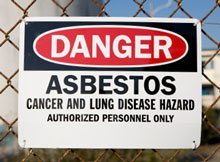Treatment Advances Fail to Improve Mesothelioma Survival Trends
 A new report shows mesothelioma survival trends have remained steady for decades, despite new drugs, new surgery techniques, and the introduction of pleural catheters.
A new report shows mesothelioma survival trends have remained steady for decades, despite new drugs, new surgery techniques, and the introduction of pleural catheters.
The report comes from cancer researchers at Ottawa Hospital Cancer Centre in Canada. Canada has one of the world’s highest rates of malignant pleural mesothelioma. This is likely related to the country’s long history of asbestos production.
To compile the new report, researchers compared mesothelioma outcomes in three different decades between 1991 and 2019. There were surprisingly few differences in mesothelioma survival trends in the three decades.
Mesothelioma’s Destructive History
Pleural mesothelioma is a virulent cancer of the pleural membrane. This is the tissue or mesothelium that surrounds the lungs. It is thin but flexible and allows the lungs to expand naturally with each breath.
Mesothelioma survival trends among people with this form of cancer are very poor. Mesothelioma spreads quickly across the membrane. This makes the membrane rigid and inflexible, constricting the lungs and making it harder to breathe.
As tumors grow, fluid called pleural effusion may collect in the space between the membrane and the lungs. This further restricts lung expansion. Mesothelioma survival trends are even worse among people with pleural effusions.
In the US, about 2,500 people get mesothelioma every year. Even with aggressive treatment, most do not live longer than a year after diagnosis.
Tracking Mesothelioma Survival Trends
The Canadian researchers analyzed mesothelioma survival trends among patients diagnosed between 1991 and 1999, between 2000 and 2009, and between 2010 and 2019. They looked for changes in the demographics of mesothelioma patients, how they were treated, and how long they lived.
The age at which patients received their mesothelioma diagnosis increased from a median of 65.8 in the first decade to 75 in the third decade. This may be related to the timing of their asbestos exposure. Canada banned asbestos in 2009.
The proportion of female mesothelioma patients also went up over time. Between 1991 and 1999, about 11.6% of Canadian mesothelioma patients were women. Between 2010 and 2019, the percentage rose to 20.5%.
No Major Differences in Lifespan
But the most disturbing information in the report is the fact that mesothelioma survival trends changed very little. In the first decade (1991 – 1999), mesothelioma patients lived for a median of 9 months. In the 2000 to 2009 cohort, mesothelioma patients lived for a median of 9.3 months.
The first drug for mesothelioma (pemetrexed) came out in 2004. Radical mesothelioma surgery (EPP) has been in use since the 1970s. And indwelling pleural catheters to drain off excess lung fluid received FDA approval in 1997.
These interventions were associated with small improvements in outcomes. But there was still hardly any difference in mesothelioma survival trends in 2010 to 2019. In that decade, mesothelioma patients lived for a median of 10.1 months.
“Despite the small incremental improvements in survival shown by the three interventions we examined, prognosis remains guarded for MPM patients,” writes lead investigator and medical oncologist Abdullah Nasser. “Better modalities of management are needed.”
Clinical trials are one of the best ways for mesothelioma patients to access promising new mesothelioma treatments. Visit clinicaltrials.gov to search for open mesothelioma studies.
Source:
Nasser, A, et al, “Three Decades of Malignant Pleural Mesothelioma: An Academic Center Experience”, March 27, 2021, Clinical Lung Cancer, Online ahead of print, https://linkinghub.elsevier.com/retrieve/pii/S1525730421000656





